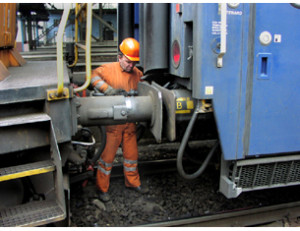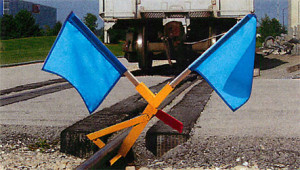Railroad Safety is a Full-Time Job
When it comes to railroading, there is really no such thing as a minor accident. After all, a freight train is a massive amount of weight that’s often moving at relatively high speeds with almost unimaginable momentum.
It’s a simple truth that working in and around trains is inherently dangerous. For example, rail cars are coupled together by using a locomotive to simply shove them together. But then a yard worker has to step in between the two cars to connect hoses and cables to transmit compressed air and electricity the length of the train. And that must be done by hand.
Then there are inspections and minor repairs that require yard workers to move around and in between rail cars, whether passenger or freight. Clearly, everyone had better be on the same page and know exactly who’s doing what and where.
That’s what blue flags are for. During the day, they’re placed at the front and rear of trains stopped in the rail yard or in stations. At night, blue lanterns are used.
A blue flag is the universal railroad signal indicating that someone is working on or around or under those rail cars. The blue flag means that train is not to be moved so much as an inch as long as they are in place. Furthermore, it’s an absolute and inviolable rule that only the person who set out the blue flags can remove them.
So keep an eye out for blue flags on your next long-distance train journey.
Next time: how to start a 10,000-ton train moving.




